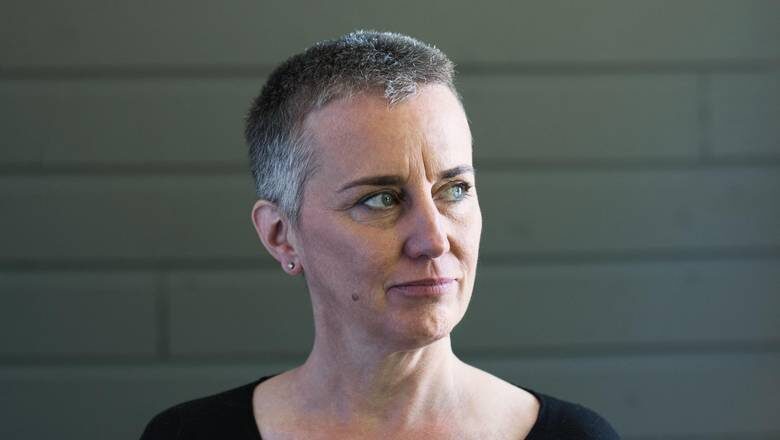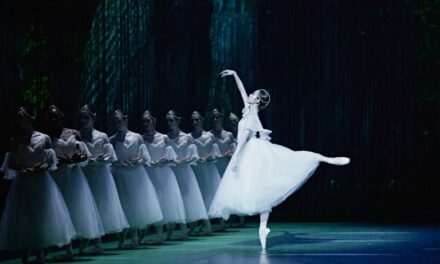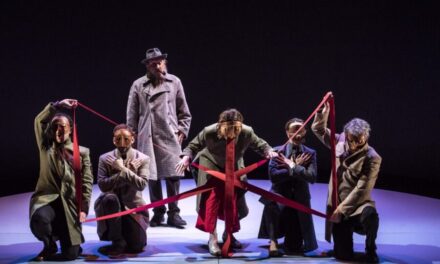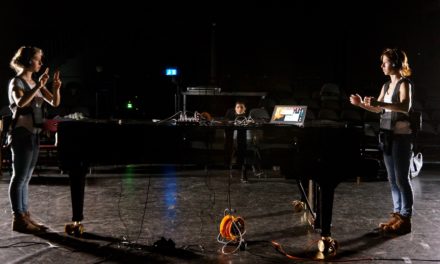An abandoned high school in the village of Farrellton, Que., just north of Wakefield, seems an unlikely place to be charting the future of theatre and exploring the role of digital technology in live arts. But Nadia Ross is having a shot at it.
Ross is the artistic director of STO Union, the independent theatre company that she founded in 1992. Unaccountably, the multidisciplinary company — which gleefully mixes theatre, video, live art, and installations — has long had a higher profile internationally than at home. It has toured from Europe to China and Australia.
In 2016, Ross won the prestigious $100,000 Siminovitch Prize in Theatre. She used a chunk of the money to move STO Union from Ottawa, where it was legally headquartered, to Farrellton, where she already had a studio but where she wanted to be officially located and able to explore her large-scale ideas within a small community environment.
She admits those ideas are tough to describe because she’s trying to predict how art experiences that happen in a live context could look in the future.
“When you do that kind of work, you are kind of showing glimpses into worlds that don’t look quite familiar, so they are hard to define, and some of it doesn’t look like what we’d call theatre today.”
The yin and yang of digital technology’s disruptive nature figures large in her vision. She sees that disruption as uprooting and isolating us at the same time that it affords new opportunities to explore artistically our connections with each other via the shared experience of theatre.
“I’m driven by artistic questions like ‘how has technology disrupted live theatre touring?’” says Ross. That question has led to a pilot program she calls digital touring, which the Siminovitch Prize also helped support. She’ll be unveiling more details later this year, but, basically, it’s meant to find new, digitally based ways of sharing live performance with people around the world.
For instance, rather than carting casts and sets around – an expensive proposition and one that she points out is not environmentally friendly — STO would provide what Ross calls the “recipe” for a show so another company could create its own version of an STO show. Sent as a digital folder, the recipe could include, for example, projections to be used in a show. The recipient then provides the performers and, in some cases, even writes the script according to the rules provided by STO.
“Instead of people touring, it’s structures or ideas or tools that are touring,” she says. “We used to share plays in the form of words written on paper. In the future, we’ll be sharing entire shows in the form of digits.”
Ross has no doubt she’s on the right track in seeking alternative ways to tour shows, including her upcoming Super Ego Out Loud. A storytelling-based art installation that celebrates the power of place on people, it will premiere on May 26 at Place des Artistes de Farrellton but could just as easily be shifted to a high rise in Toronto, with residents contributing their stories.
Anyone in theatre who doesn’t make digital technology an ally is “dead in the water,” Ross says. “All the gods of theatre – (the show) should start at 8; we should have a set number of rehearsals — all the recipes we’re used to will be thrown out the window within a few years. There will always exist the classic, traditional experience, but it’s going to explode into all these different kinds of experience.”
Ross, who’s 53 and grew up in Aylmer, knows about the traditional gods and recipes of theatre. A graduate of the University of Toronto’s drama program, she never did fit into the mainstream theatre world. Instead, she wound up part of Toronto’s alternative theatre scene, collaborating with independent artists like playwright Daniel MacIvor and director Daniel Brooks before stepping out on her own with STO Union.
In 1994, STO premiered its first work, The Alistair Trilogy. A collaboration between Ross and Diane Cave, the show won the Chalmers Awards.
STO has since gone on to create other new works, including Revolutions in Therapy (with Jacob Wren) and 7 Important Things (with George Acheson), both of which toured abroad, and experimental pieces like What Happened to the Seeker.
None of these shows has reduced Ross’s outsider status, but that’s fine with her. “Creative force runs my life … I have surrendered to it,” she said in her Siminovitch acceptance speech. “We do this because we love the world as much as we hate it and we know that our only response can be a creative one, one that honours life, that honours death, and everything in between.”
That sensitivity to the creative process is part of what’s behind P.O.R.N. (Portrait of Restless Narcissism) by Ross and Christian Lapointe. Scheduled for workshopping this year and a 2020 world premiere in Europe, the show, she says, inquires into the effects of new technologies on the writing of a text.
“We now write with links and emojis and passwords and images. What kind of play does that produce? What kind of playwright does that make us? What kind of story does a human being tell under those conditions?”
Ross is also intensely interested in how evolving forms of theatre might help overcome the isolation fostered by technology, which increasingly eradicates the need for us to work in close physical proximity with one another. “We’re human beings. We have to be in a room together and experience stories together,” she says. Shows that bring the community into the creative process, rather than just serving as the audience, may help rekindle a sense of belonging.
Shows like The Twilight Parade, which played Ottawa’s undercurrents festival in 2018 and is being readied for digital touring, are part of this thrust. That show – a feature-length film about a community theatre company performing its play, The Twilight Parade, and which directly involved local residents – spotlighted another of Ross’s interests: whether the business of art is shifting away from large urban centres and into smaller settings because new technologies enable that. “Like all explorations, we have to wait to find out full results,” she says.
Referring to Farrelton and STO, Ross says, “My goal is to leave something in this region so there’s some kind of structure that can be continued after I’m gone, that will allow artists to work here … It might not be New York, it might not be very glamorous, but these are people here, too, and they also need to feel connected to each other.”
This article was originally posted on Artsfile.ca on May 22 and Capital Critics’ Circle / Le cercle des critiques de la capitale and has been reposted with permission.
This post was written by the author in their personal capacity.The opinions expressed in this article are the author’s own and do not reflect the view of The Theatre Times, their staff or collaborators.
This post was written by Patrick Langston.
The views expressed here belong to the author and do not necessarily reflect our views and opinions.


















